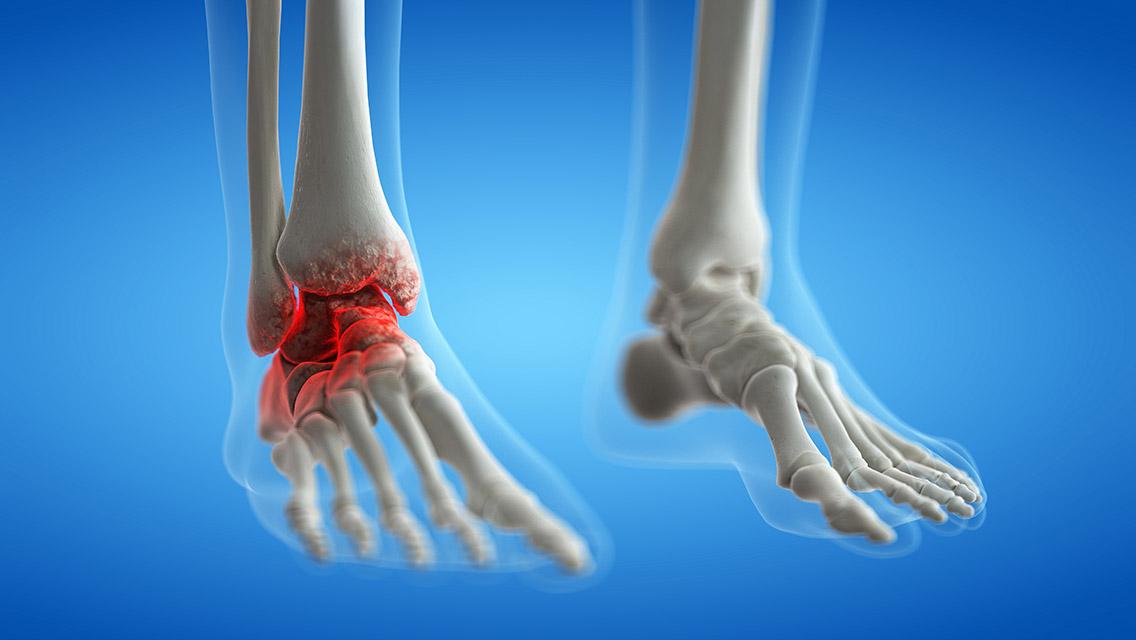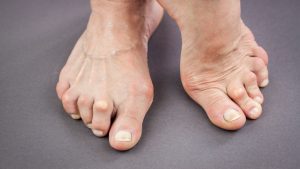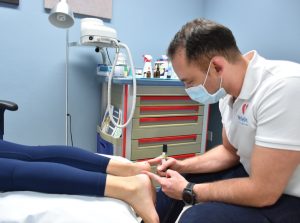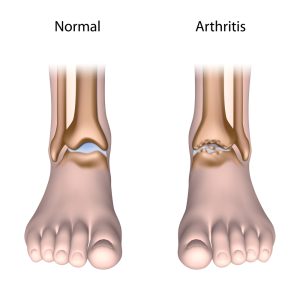
In the bustling heart of Singapore, where each step counts, ankle arthritis can transform daily movement into a challenging ordeal. At My Foot Dr. Singapore, we recognize the profound impact this condition can have on your lifestyle. Our goal is to demystify foot and ankle arthritis, empowering you with knowledge about its causes, treatment options, and effective management strategies to improve your quality of life.
Understanding Foot and Ankle Arthritis
Foot and ankle arthritis is more than just a mere inconvenience; it represents a significant health concern affecting the joints in these areas (1). The most common form, osteoarthritis, is characterized by the degeneration of joint cartilage, leading to pain and stiffness. This condition can significantly impair mobility and quality of life, making even simple tasks like walking or climbing stairs difficult.
Arthritis can affect various parts of the foot and ankle, each presenting its own set of challenges. The subtalar joint, midfoot joints, and big toe are commonly affected areas. As the condition progresses, the joints may become increasingly stiff and painful, particularly after periods of rest or in the morning.
Causes and Risk Factors
Arthritis in the foot and ankle can stem from a range of causes and risk factors:
- Genetic Predisposition: Some individuals are genetically more prone to developing arthritis. This predisposition increases the likelihood of experiencing joint problems at some point in their lives.
- Age: The risk of developing arthritis increases with age. As people grow older, the cartilage in their joints gradually wears down, leading to arthritis.
- Previous Injuries: A history of foot or ankle injuries can lead to post-traumatic arthritis. Injuries such as fractures or severe sprains can damage the joint cartilage, eventually leading to arthritis.
- Repetitive Stress: Certain occupations or activities that involve repetitive stress on the foot and ankle can predispose individuals to arthritis. This includes jobs that require standing for long periods or sports that put excessive strain on the feet and ankles.
- Obesity: Excess weight puts additional stress on the joints, including those in the foot and ankle, which can accelerate the wear and tear of the cartilage.
- Other Medical Conditions: Certain medical conditions, such as rheumatoid arthritis or gout, can also contribute to the development of foot and ankle arthritis. In Singapore, the prevalence of inflammatory arthritis presents a notable risk factor for the development of foot problems, including arthritis.
Symptoms to Look Out For
Identifying the early signs of foot and ankle arthritis is key to managing and slowing its progression. Common symptoms include:
- Joint Pain and Tenderness: Pain in the foot or ankle during or after movement or after prolonged inactivity.
- Swelling and Warmth: The affected joint may swell, feel warm, and appear red, especially after extended periods of use.
- Stiffness: A noticeable stiffness in the foot or ankle, particularly in the morning or after sitting for a long time.
- Decreased Range of Motion: Difficulty in performing movements that were once easy, like walking, climbing stairs, or even standing.
Being aware of these symptoms can lead to earlier diagnosis and treatment, ultimately improving outcomes.
Effective Treatment Strategies
The treatment of foot and ankle arthritis involves a combination of approaches:
- Medications: Nonsteroidal anti-inflammatory drugs (NSAIDs) can relieve pain and reduce inflammation. In more severe cases, stronger medications may be prescribed.
- Physical Therapy: Tailored exercise programs can improve range of motion and strengthen the muscles around the joint, thereby reducing the burden on the affected area.
- Orthotics and Supportive Footwear: Custom orthotics or well-cushioned, supportive shoes can alleviate pressure on the arthritic joints and improve comfort during movement.
- Surgical Options: In advanced cases, surgical interventions such as joint fusion or replacement may be considered.
Lifestyle Adjustments for Relief, Prevention, and Management
Lifestyle changes are crucial for managing symptoms and preventing the progression of foot and ankle arthritis:
- Exercise and Weight Management: Low-impact activities like swimming, cycling, or yoga can keep joints flexible and muscles strong without adding stress. Maintaining a healthy weight reduces pressure on the joints.
- Diet: A balanced diet rich in anti-inflammatory foods can help manage arthritis symptoms. Omega-3 fatty acids, found in fish and nuts, are particularly beneficial.
- Foot Care: Regular foot care, including gentle stretching and massages, can improve circulation and reduce pain.
Understanding Ankle Osteoarthritis Progression
Ankle osteoarthritis, particularly in its advanced stages, can significantly impact mobility and quality of life. Understanding its progression is crucial for effective management and treatment planning.
Stages of Progression
- Early Stage: Initially, arthritis may present with mild pain and stiffness in the ankle. At this stage, it’s often possible to manage symptoms with conservative treatments like physical therapy and NSAIDs.
- Moderate Stage: As the condition progresses, the cartilage in the joint continues to wear down, leading to increased pain, swelling, and limited range of motion. Orthotic devices and more targeted therapies may become necessary.
- Advanced Stage: In severe cases, the joint may become deformed, and pain can become constant, significantly affecting mobility. Surgical options, including arthroplasty or arthrodesis, might be considered.
The Johnston County Osteoarthritis Project provides valuable insights into the incidence and progression of ankle osteoarthritis, helping clinicians identify risk factors and early intervention opportunities (2).
Living with foot and ankle arthritis can be challenging, but it doesn’t have to define your life. At My Foot Dr. Singapore, we believe in a holistic approach to managing this condition. By combining the latest medical treatments with lifestyle adjustments and continuous research insights, we aim to provide our patients with comprehensive care tailored to their individual needs.
Education plays a vital role in managing arthritis. Understanding the condition, its progression, and the rationale behind various treatment options empowers patients to take an active role in their care.
Each patient’s journey with arthritis is unique. We focus on creating personalized care plans that address specific symptoms, lifestyle factors,
and treatment preferences. Whether it’s selecting the right orthotic device, guiding through a physical therapy regimen, or discussing surgical options, our team works closely with each patient to ensure the best possible outcomes.
We believe in partnering with our patients in their journey toward better foot and ankle health. Regular follow-ups, adapting treatments as the condition evolves, and staying abreast of the latest research and techniques are all part of our commitment to providing the highest standard of care.
Foot and ankle arthritis is a manageable condition with the right approach. At My Foot Dr. Singapore, we’re dedicated to helping you relieve pain, prevent further joint damage, and maintain your active lifestyle. Together, we can tackle the challenges of arthritis and stride towards better health and mobility.
References
- Herrera-Pérez M, Valderrabano V, Godoy-Santos AL, de César Netto C, González-Martín D, Tejero S. Ankle osteoarthritis: comprehensive review and treatment algorithm proposal. EFORT Open Rev. 2022 Jul 5;7(7):448-459. doi: 10.1530/EOR-21-0117. PMID: 35900210; PMCID: PMC9297055.
- Ayesha Jaleel, Yvonne M. Golightly, Carolina Alvarez, Jordan B. Renner, Amanda E. Nelson. Incidence and progression of ankle osteoarthritis: The johnston county osteoarthritis project. February 2021. https://www.sciencedirect.com/science/article/abs/pii/S0049017220303103



